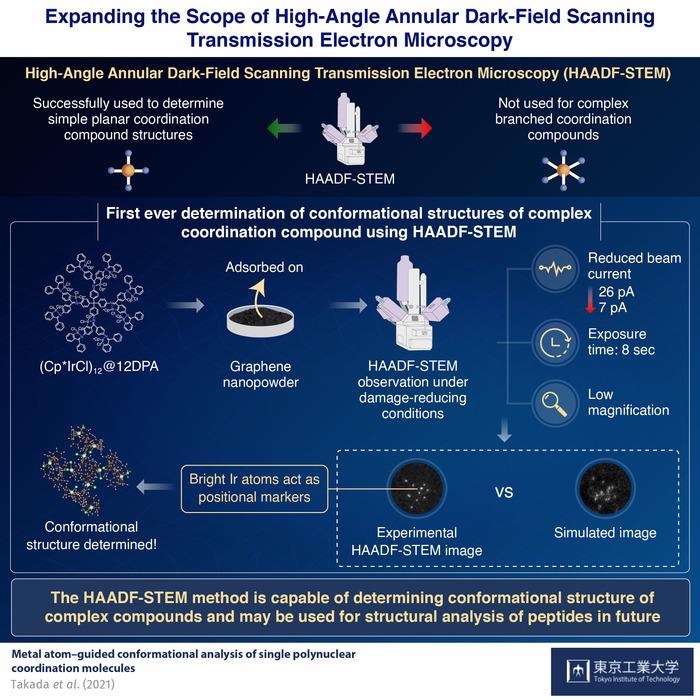Coordination compounds exhibit molecular structures comprising either one or multiple metal atoms in the center, encircled by non-metal atoms. Their appealing chemical and physical properties with innovative uses in materials science are mostly based on their molecular structure.

Image Credit: Tokyo Institute of Technology
A quantitative assessment of their molecular structure is essential to understand their properties and develop particular coordination compounds with specified functions.
Despite the availability of various analytical methods for determining the structure of coordination compounds, they have their own limitations. For instance, X-ray crystallography can identify only the structure of crystalline compounds, and nuclear magnetic resonance cannot offer precise outcomes when paramagnetic atoms are a part.
The latest microscopy method known as high-angle annular dark-field scanning transmission electron microscopy (HAADF-STEM) has brought advancements in the molecular imaging field with instant visualization of single coordination molecules. However, this technique is also limited to the observation of planar and simple molecules.
Thus, the structural determination of numerous conformations (all possible spatial orientations of atoms) of amorphous and crystalline polynuclear coordination molecules requires additional research.
To solve this issue, a research team headed by Professor Kimihisa Yamamoto and Associate Professor Takane Imaoka from the Tokyo Institute of Technology have designed a novel imaging technique by employing a metal-atom tracer in HAADF-STEM. This can be used to identify the conformational structures of complicated and immensely branched polynuclear coordination compounds.
The study outcomes were published in the journal Science Advances.
Using iridium as a metal tracer, because its high atomic number (Z = 77) will provide better visualization with HAADF-STEM, we synthesized iridium fixated dendritic phenylazomethine (DPA) compounds. Then, we determined the optimum operating conditions for HAADF-STEM, under which the different conformations of these highly branched DPA compounds could be determined with the highest accuracy.
Takane Imaoka, Associate Professor, Tokyo Institute of Technology
For the ideal operating condition for HAADF-STEM to be identified, the team performed observations of iridium-DPA compound samples dispersed on the surface of graphene nanopowder, subjected to different operating conditions.
They observed that decreasing the beam current to 7 pA and exposure time per pixel to 8 μs and then employing low magnification decreased the damage caused to the iridium-DPA compounds.
Also, this helped the team to observe the structure successfully. The iridium atoms look like bright spots in the HAADF-STEM images, denoting their position in the molecule’s structure.
The HAADF-STEM image of the iridium-DPA molecule was achieved under optimum conditions. Then, the team compared the results with simulated images of all possible molecule conformations to identify the nearest match.
The structures obtained in the experimental HAADF-STEM images matched almost well with the simulated conformational structures. Hence, this appears to be a precise conformational orientation of a molecule enabling simple determination by comparing simulated images and HAADF-STEM images.
The possible applications of this heavy metal-directed HAADF-STEM technology are not just restricted to structural analysis coordination compounds.
Our study is a pioneering effort in imaging conformational structures of complex macromolecules.
Takane Imaoka, Associate Professor, Tokyo Institute of Technology
“As this technology is effective for both crystalline and amorphous compounds, we believe this technology can also be applied for determination of structures of multinuclear peptides through complexation with tracer metal atoms, and work on this area is already under progress,” added Imaoka.
Journal Reference:
Takada, K., et al. (2021) Metal atom–guided conformational analysis of single polynuclear coordination molecules. Science Advances. doi.org/10.1126/sciadv.abd9887.